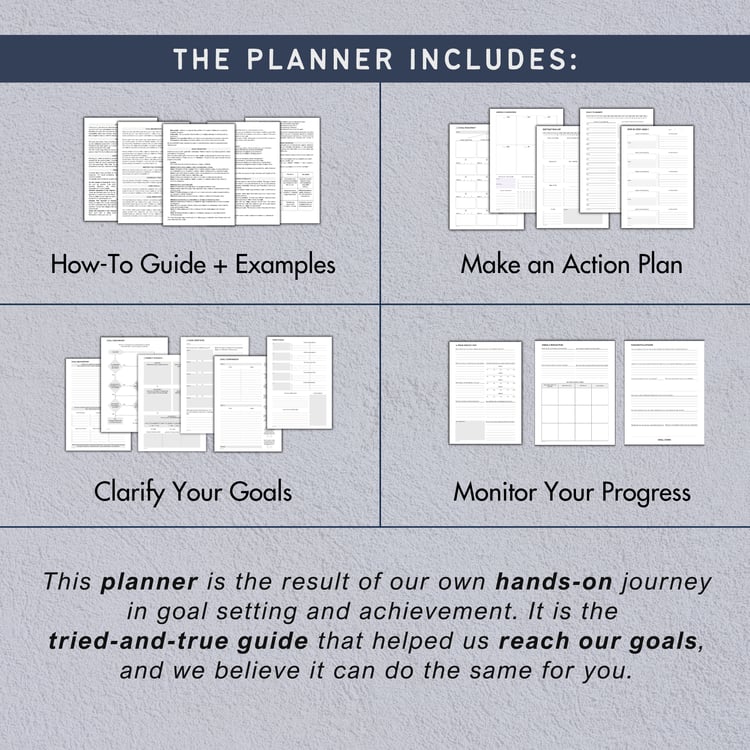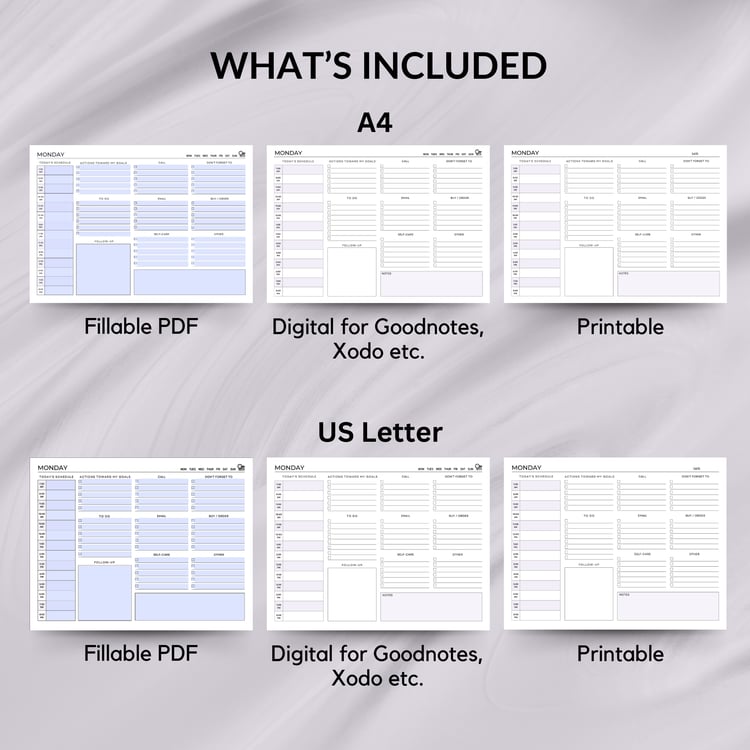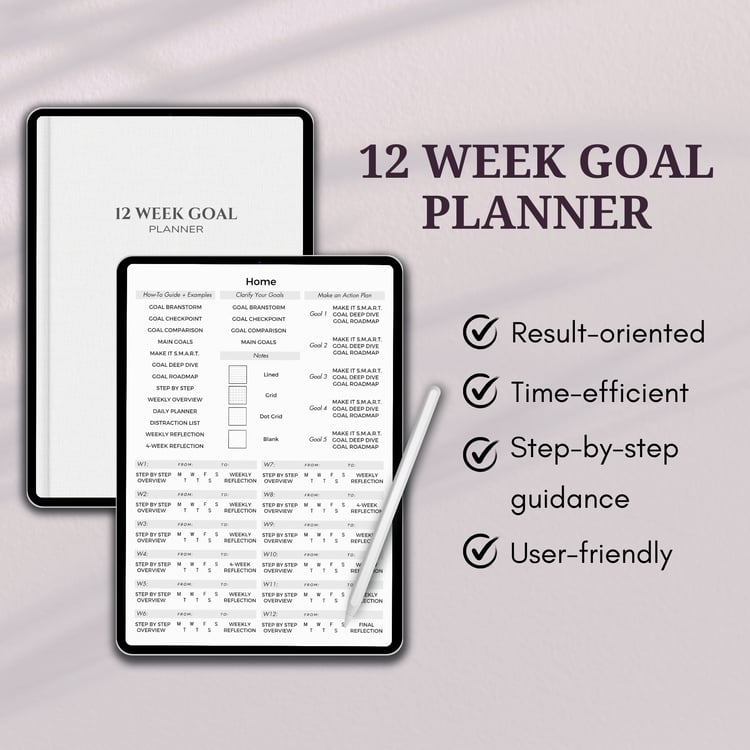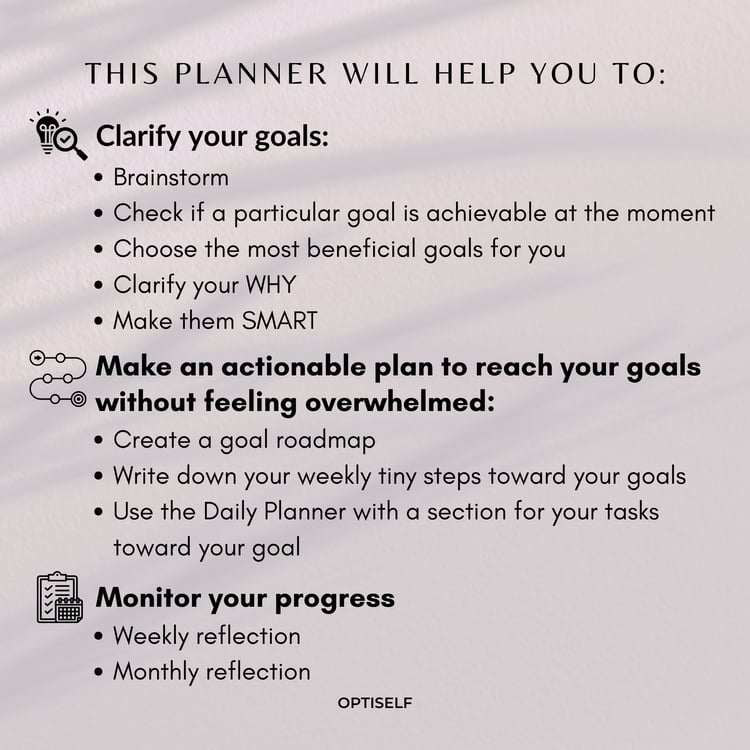Setting boundaries sounds great in theory—protect your peace, say “no” more often, live your best life. But when it comes to actually doing it, things can get awkward, guilt-inducing, or just plain confusing.
What does a healthy boundary really look like?
How do you communicate it without coming off as rude, distant, or selfish?
And what happens when people push back or don't respect your limits?
The truth is, setting boundaries is a skill—and like any skill, it can be learned with practice. The good news is that it doesn’t have to be as difficult or intimidating as it seems. In fact, setting clear, compassionate, and sustainable boundaries can be incredibly freeing and essential for preserving your well-being.
This guide will walk you through practical, step-by-step strategies (complete with real examples) to help you confidently set boundaries that honor both your needs and your relationships.
Step 1: Get Clear on What You Need

Before you can set strong boundaries, you need to figure out where you need them—and that starts by getting radically honest with yourself. Boundaries often reveal themselves in moments of frustration, resentment, anxiety, or burnout. These emotions are not random—they’re signals. They often show up when your limits have been crossed, your needs are being ignored, or you're giving more than you're comfortable with.
Start by asking yourself:
- What situations leave me feeling drained, overwhelmed, or taken for granted?
- Who (or what) do I feel resentful toward lately—and why?
- Where am I consistently saying “yes” when I really want to say “no”?
- When do I feel like I’m betraying myself to keep the peace?
Don’t judge your answers—just observe. This is about building awareness, not shame. Your emotional discomfort is valuable data. Once you identify where the friction is, you’ll start to see exactly where a boundary is missing or needs to be reinforced.
Step 2: Identify the Type of Boundary (and What It Protects)

Not all boundaries are created equal—because not all parts of your life need the same kind of protection. Understanding the type of boundary you’re setting helps you stay clear and confident in how you express it. It also gives others a better shot at respecting it, because they can understand what you’re really asking for.
1. Emotional Boundaries
These protect your ability to feel your feelings, manage your own emotional energy, and not take responsibility for other people’s emotional states. Emotional boundaries are especially important in close relationships, where people often unconsciously expect others to regulate their emotions for them.
Purpose: To separate your emotions from others’, and to avoid emotional exhaustion or enmeshment.
Examples:
- “I can’t be available for emotional support every time you’re upset. I care about you, but I also need space to deal with my own stuff.”
- “I’m not comfortable talking about my past trauma right now.”
- “It hurts when my feelings are dismissed. I need to be heard without being told I’m overreacting.”
2. Time Boundaries
Time is your most limited resource. These boundaries protect how, when, and where you spend it—so you’re not constantly stretched thin or saying yes to things you don’t want to do. Time boundaries are often crossed when you feel pressure to people-please or be “always available.”
Purpose: To prioritize your energy and avoid burnout, overcommitment, or resentment.
Examples:
- “I’m unavailable to chat or meet up after 8 PM on weekdays. I need that time to wind down and rest.”
- “I don’t take calls or make decisions during lunch breaks—I use that time to recharge.”
- “I need to have Sundays completely free for rest and personal time, so I won’t be available for meetings or work-related tasks.”
3. Physical Boundaries
These relate to your personal space, physical touch, and overall sense of bodily autonomy. Physical boundaries are highly individual and often cultural—what’s normal for one person might feel invasive to another. Always honor your gut instinct.
Purpose: To feel safe, comfortable, and in control of your own physical environment.
Examples:
- “I don’t like being hugged—can we stick to a wave or handshake?”
- “Please don’t touch my things without asking.”
- “I need personal space when I’m feeling overwhelmed.”
4. Mental (or Intellectual) Boundaries
These protect your right to your own thoughts, beliefs, opinions, and values. They also help you engage in respectful conversations without being gaslit, belittled, or pressured to agree. Mental boundaries often come up in families or friend groups where “agreeing” is mistaken for “being close.” You can love someone and still think very differently from them.
Purpose: To maintain autonomy over your mind and perspective, and to allow space for respectful disagreement.
Examples:
- “I respect your opinion, but I don’t agree—and I’m not open to debating this.”
- “I don’t feel comfortable discussing this topic anymore. Let’s change the subject.”
- “I’m not okay with being interrupted or talked over when I’m sharing my thoughts.”
5. Digital Boundaries
In our hyper-connected world, you also need limits around how you use technology—and how others engage with you through it. Just because someone can reach you 24/7 doesn’t mean they should. You get to choose when and how you engage online.
Purpose: To protect your peace, privacy, and focus in the digital space.
Examples:
- “I turn off notifications after 9 PM, so I won’t respond to messages until the next day.”
- “Please don’t tag me in photos without asking first.”
- “I don’t share my location or passwords, even with people I trust—it’s a personal policy.”
6. Conversational Boundaries
These help you steer conversations away from topics that are harmful, triggering, or just plain exhausting.
Purpose: To protect your mental and emotional energy in dialogue, especially around sensitive or inappropriate topics. You don’t have to tolerate offensive, demeaning, or draining conversations to keep the peace. Changing the subject or walking away is a valid boundary.
Examples:
- “I don’t talk about my weight or diet—it’s not healthy for me.”
- “I’d rather not discuss politics at family dinners.”
- “I’m not okay with gossiping about coworkers. Can we talk about something else?”
7. Material Boundaries
These relate to your belongings—money, possessions, or physical resources. It’s okay to say “no” to protect your resources, even if someone else feels entitled to them.
Purpose: To ensure your things are respected and not misused or taken for granted.
Examples:
- “I’m happy to lend my car occasionally, but not for out-of-town trips.”
- “I don’t loan money to friends—it complicates the relationship.”
- “Please ask before borrowing my clothes or makeup.”
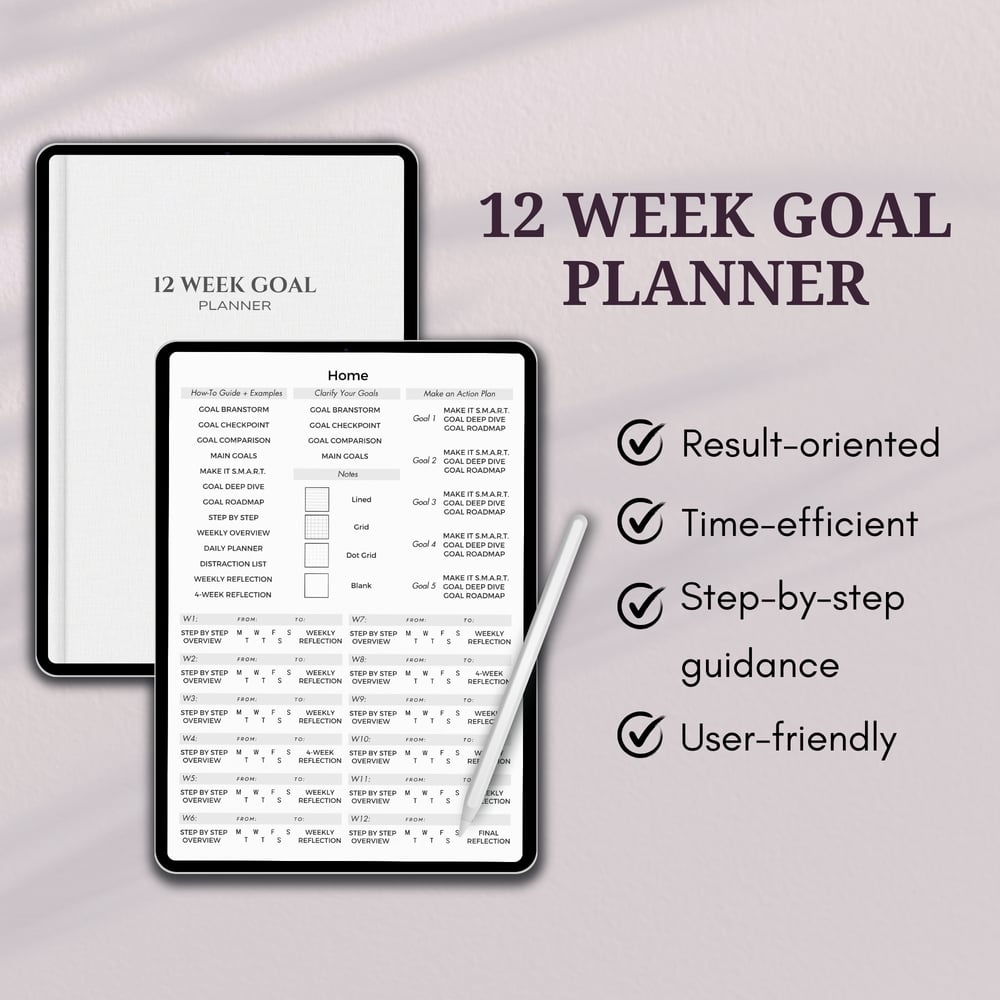
If you struggle with setting and achieving your goals, check out our 12 Week Year Planner. It’s based on our personal journey of trial, error, and ultimately finding what works. This is the exact tool that helped us follow through — and we believe it can help you too.
Step 3: Use Clear, Direct Communication (Without the Guilt Spiral)

Once you know what boundary you need and why, the next step is to communicate it—out loud, to another human. This is where a lot of people get stuck.
Why?
Because direct communication can feel scary. We’ve been conditioned to believe that saying “no,” asserting our needs, or disappointing others makes us selfish, rude, or “too much.” But the truth is: boundaries are healthiest when they’re clear, not hinted at or silently hoped for.
🔹 What Makes Communication “Clear”?
Clarity means you’re not vague, passive-aggressive, or overly apologetic. It means the other person walks away knowing:
- What the boundary is
- Why it matters (optional, but helpful)
- What they can expect going forward
🔹 Use Assertive, Not Aggressive Language
Passive = unclear, people-pleasing, self-sacrificing.
Aggressive = controlling, blaming, or attacking.
Assertive = firm but respectful.
You can be clear without being cold. Think calm tone, steady voice, neutral language.
For example:
- Passive: “I mean, if you don’t mind... could we maybe not talk about that anymore?”
- Aggressive: “I’m done with your drama. Don’t ever bring that up again.”
- Assertive (Ideal): “I’m not comfortable discussing that topic. Let’s talk about something else.”
🔹 Use Boundary Scripts (So You Don’t Freeze in the Moment)
Having ready-to-go boundary scripts can be a game-changer—especially when you’re caught off guard or your nervous system wants to freeze, fawn, or fake a smile. These scripts are like mini templates: they help you express your needs clearly without the guilt or over-explaining.
A helpful structure is this formula:
✅ “I feel ___ when ___, so I need ___.”
It helps you express your need while staying grounded and non-confrontational.
Examples:
- “I feel anxious when plans are changed last minute, so I need more notice going forward.”
- “I feel overwhelmed when meetings run over time, so I need us to stick to the schedule so I can manage the rest of my day.”
- “I feel uncomfortable when my decisions are questioned, so I need support without unsolicited advice.”
- "I feel dismissed when I’m interrupted, so I need the space to finish my thoughts before hearing your response."
- “I feel hurt when my decisions are met with guilt, so I need respect for my choices even if they’re different from yours.”
- “I feel uncomfortable when my personal life is shared online without my consent, so I need that info to stay private.”
- “I feel invalidated when my values are dismissed, so I need us to acknowledge our differences without trying to ‘fix’ each other.”
- “I feel overwhelmed when I don’t get enough alone time, so I need space to recharge on my own regularly.”
🔹 Other Easy, Direct Boundary Phrases:
Not every moment calls for a full script. Sometimes a simple, firm sentence is enough.
Try these:
- “I’m not available for that.”
- “That doesn’t work for me.”
- “I’d prefer not to.”
- “I’m choosing to handle this differently.”
- “Let’s put a pin in this conversation for now.”
- “Thanks for thinking of me, but I have to pass.”
- “I need time to think before I commit.”
These are short, clear, and respectful—perfect for when you’re caught off guard or feeling nervous.
🔹 Anticipate the Reaction, But Don’t Personalize It
Here’s a truth bomb: You are not responsible for other people’s emotions.
Someone might feel surprised, annoyed, or disappointed. That’s okay. It doesn’t mean you’re wrong for setting the boundary.
You can acknowledge their feelings without changing your boundary:
- “I understand that’s frustrating. I still need to stick with what feels right for me.”
- “I get that this might feel different, but I need this to take care of myself.”
- “It’s okay if you’re upset. I’m still choosing to say no.”
🔹 What If You Already Said “Yes” But Want to Set a Boundary Now?
Totally normal. You’re allowed to change your mind. Boundaries aren’t rigid walls—they can be set at any point. It’s never too late to speak up for yourself.
You can say:
- “After thinking about it, I realized I overcommitted. I won’t be able to follow through.”
- “I want to be honest—I said yes out of pressure, but it’s not something I can do.”
- “I’m learning to respect my limits, and this doesn’t align with them.”
Step 4: Be Ready for Pushback (and Hold the Line)

Here’s the truth: when you start setting boundaries—especially if you haven’t before—not everyone will clap for you. In fact, some people might resist, guilt-trip, get defensive, or test the limits you just set.
Why? Because boundaries change the dynamic. And when you stop over-giving, over-explaining, or over-accommodating, the people who were benefiting from that behavior may feel a sense of loss—even if your boundary is totally reasonable.
But don’t panic. Pushback doesn’t mean your boundary is wrong—it just means it’s new.
🧠 First, Understand Where Pushback Comes From
Pushback is usually a reaction to:
- Discomfort with change
- Fear of rejection or abandonment
- Lack of understanding
- Loss of control
- Long-standing patterns being disrupted
It’s not always malicious. Sometimes it’s just unfamiliar. Boundaries challenge people to self-regulate—and not everyone’s practiced at that.
🚧 Common Forms of Pushback (And What to Do)
1. Guilt-Tripping
“Wow, I guess you don’t care about me anymore.”
Your Move: Stay calm. Guilt is a manipulation tactic—often unconscious. Reaffirm your boundary and your care.
Try saying:
- “I care about you and I need to do what’s right for me.”
- “I understand this feels different, but I’m not doing this to hurt you—I’m doing it to take care of myself.”
2. Defensiveness
“Are you saying I’m a bad friend/partner/sibling?”
Your Move: Reassure them that it’s about your needs, not their character. Stay firm, not combative.
Try saying:
- “This isn’t about blame—it’s about what I need to feel okay.”
- “You haven’t done anything wrong. I just need to communicate my limits better moving forward.”
3. Anger or Blow-Ups
“Fine. Whatever. Don’t ask me for anything ever again.”
Your Move: Don’t match their intensity. Stay centered and neutral. You’re allowed to pause or walk away from the conversation if it becomes toxic.
Try saying:
- “I understand you’re upset. Let’s talk when we’re both calm.”
- “I’m not going to continue this conversation if it becomes disrespectful.”
4. Testing the Boundary
They ignore it completely and keep doing the thing you asked them not to do.
Your Move: Reiterate your boundary—and follow it with action, not just words. Consequences are not punishments; they’re healthy accountability.
Try saying:
- “I already shared what I’m comfortable with. If that can’t be respected, I’ll have to take a step back.”
- “If this keeps happening, I’ll need to create more distance to protect my peace.”
5. Minimizing or Mocking
“You’re being so dramatic.”
“Wow, since when are you so sensitive?”
Your Move: Do not take the bait. You don’t need to prove or justify your boundary. Simply restate it and exit the argument.
Try saying:
- “I don’t need you to understand it—just to respect it.”
- “This isn’t up for debate. Let’s move on.”
🔁 The Power of Repetition: Don’t Be Afraid to Repeat Yourself
You might have to re-state a boundary more than once—especially with people who are used to you having none. That doesn’t mean you’re failing; it means you’re training people to relate to you differently.
Example:
“Like I said, I’m not taking on extra work this week. I need to prioritize my current tasks.”
“As I mentioned before, I’m not discussing that topic anymore.”
Repetition = reinforcement. Say it as many times as needed—with calm, not apology.
🧭 Remind Yourself: Your Boundary Is Not a Betrayal
If someone makes you feel like you're “letting them down,” pause and ask yourself:
- Am I betraying them? Or am I finally choosing myself?
- Is their discomfort worth more than my well-being?
You can be a kind, loving person and have firm boundaries. That’s not a contradiction—it’s emotional maturity.
🧘♀️ Re-Center Yourself After Pushback
Even when you do everything “right,” setting boundaries can stir up old emotions—fear of rejection, guilt, or anxiety. Take care of yourself after the conversation.
Try this:
- Take a walk, do a nervous system reset (deep breaths, stretching, grounding)
- Journal how you feel and affirm your choice: “I’m proud of myself for protecting my peace.”
- Talk to a therapist or trusted friend who respects your growth
Step 5: Follow Through with Action (Not Just Words)

Setting a boundary means nothing if you don’t uphold it. Words are the first step—but consistent action is what teaches people how to treat you. That might mean stepping back from a relationship, saying no without explaining, or enforcing a consequence you previously mentioned.
Following through can feel uncomfortable at first, especially if you're used to over-giving or avoiding conflict—but it's where self-respect really takes root. People may test your limits, but every time you stand firm, you're reinforcing your value and teaching others that your needs matter. Remember: enforcing a boundary isn’t mean—it’s a form of self-care in motion.
Examples:
1. Boundary: “I’m not comfortable being around yelling or disrespect.”
🚪 Follow-through: If someone starts yelling, you calmly say, “I’m going to leave this conversation if it continues like this.” If they keep yelling—you actually leave the room, hang up, or end the interaction.
2. Boundary: “Please don’t bring up that topic again—it’s triggering for me.”
🧠 Follow-through: If someone brings it up anyway, you say, “I asked for that not to be discussed. I’m stepping away from this conversation now.” Then you leave, log off, or shift the topic—without justifying yourself.
Every time you act on your boundary—even in small ways—you build trust with yourself and re-train others on how to interact with you. Respect doesn’t come from what you say—it comes from what you do next.
Setting boundaries isn’t selfish—it’s self-respect in action. Every time you name what you need, communicate it clearly, and follow through with consistency, you’re strengthening your relationship with yourself and creating healthier dynamics with others. It might feel uncomfortable at first, but that discomfort is temporary. What lasts is your peace, clarity, and confidence.
Start small, stay grounded, and remember: boundaries aren’t about controlling others—they’re about taking care of you.
YOU MIGHT ALSO LIKE:





